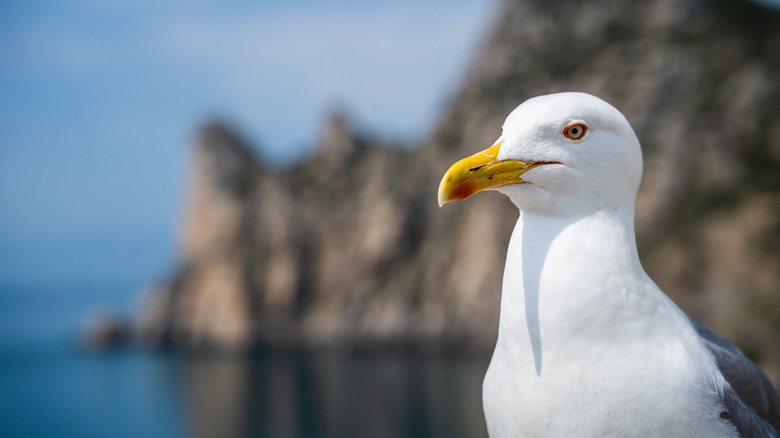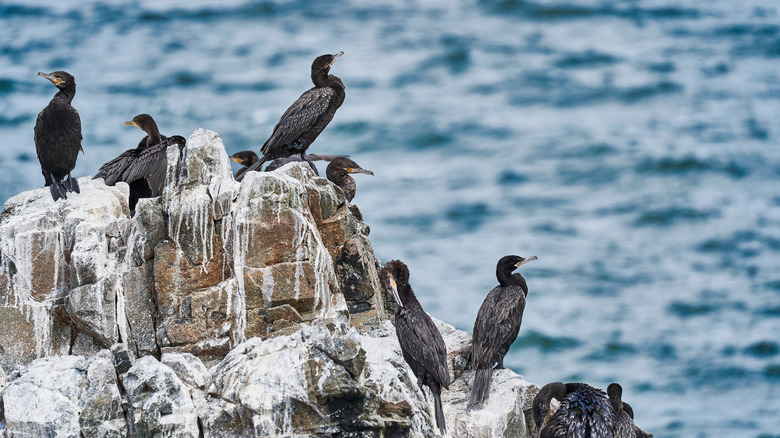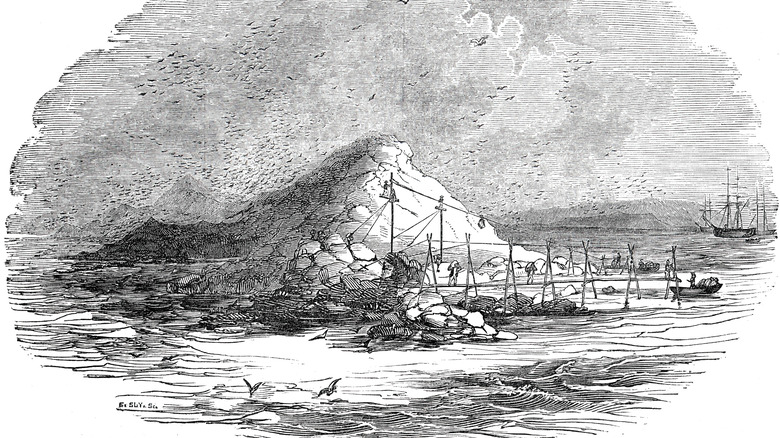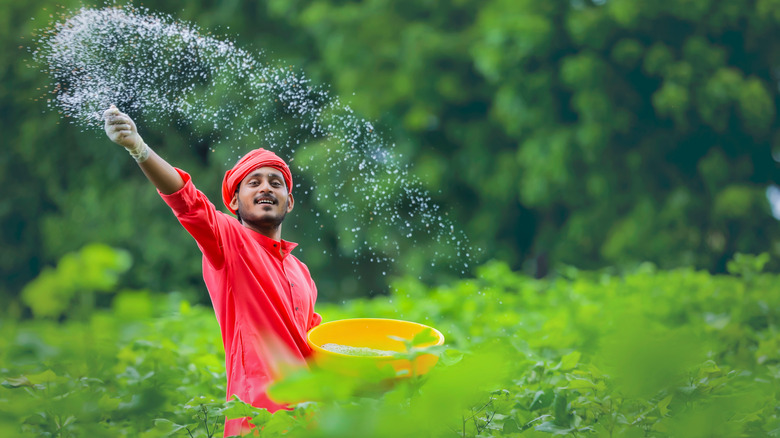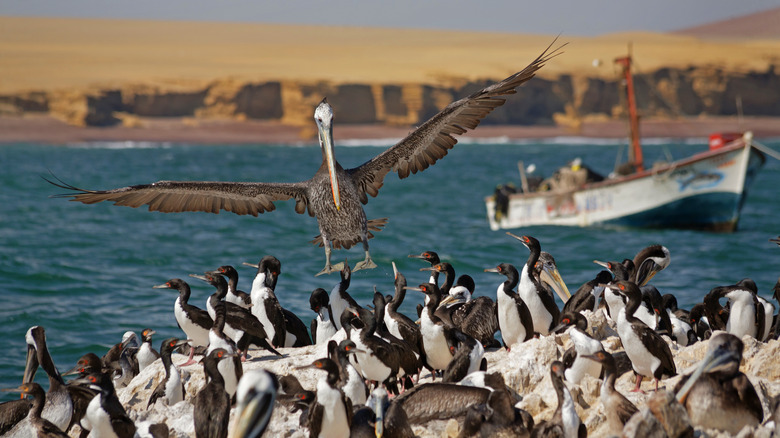When Bird Poop Powered Western Agriculture
Many people have had a picnic ruined by something falling from the sky, finding their lunches or worse yet, their heads. Or maybe they spend hours of their lives scrubbing the windshields of their cars to remove pounds and pounds of pesky bird poop, also known as guano. It's an unfortunate annoyance of everyday life, and many of us have simply come to expect it and, hopefully, do our best to avoid it.
But despite the connotations it has today, bird poop was known as "white gold" in South America in the 17th century, and dove poop, in particular, is even recognized in The Bible as worth "five pieces of silver," according to Smithsonian Magazine. Because bird poop is so rich in phosphorus, potassium, and nitrogen, it has been coveted for agricultural uses for hundreds of years, according to Science. Unlike most people today, early farmers and civilizations most certainly saw a heap of guano falling from the sky as a stroke of good luck.
Origins in Peru
More than 2,000 years ago, ancient civilizations noted how beneficial bird droppings were for plants and began using it as agricultural fertilizer in Peru, according to a book about the uses of guano called "Seabirds." Per to a report from the Spanish conquistador Garcilaso del la Vega in 1609, citizens of the Inca Empire who harmed seabirds, somehow blocked them from nesting on "guano islands," or otherwise interfered with the fertilization process, could be killed on the spot.
This was all in the name of food security, as the bird poop was critical to producing food for a civilization of 8 million, according to a paper by Pedro Rodrigues. Once guano became an established feature of their societies, the Peruvians began to spread the love. From islands where seabirds often gathered, they collected the bird poop and sent it via llama to the Andean mountains, where civilizations in what is now Chile and other South American regions began to prosper off its agricultural benefits.
The guano 'boom'
When Prussian geographer Alexander von Humboldt traveled to Peru in the late 18th century, he noticed huge quantities of an unknown substance being shipped off to other parts of South America, according to Gregory T. Cushman in his book, "Guano and the Opening of the Pacific World." Humboldt was dubious that this product could possibly be guano, so he took a sample back with him to Europe when he returned in 1804 and had a chemist analyze it.
With the amount of nitrogen, phosphorus, and potassium that came up in the analysis, they quickly realized these South American civilizations were up to something and began using it for crops, per Humboldt. Within 20 years, the "guano industry" boomed, and "the UK imported over two million tons of guano," according to Atlas Obscura. The UK made trade deals with Peru, which exported roughly 11.5 million tonnes of guano between 1840-1880, while also harvesting its own from nearby islands with plentiful seabirds.
'The guano crisis'
Once the U.S. heard about the guano boom, it did what the colonialist country does best — monopolizing the industry and taking over 200 guano islands to export products, per Hakai Magazine. To try and secure nutrient-rich lands in Bolivia, Peru went to war, according to Atlas Obscura.
But parallel to the guano crisis happening around the world, scientists were developing chemical fertilizers that went on to revolutionize agriculture, per Atlas Obscura. Now responsible for half the world's food production, these artificial fertilizers were easier to collect than physical bird droppings and, although they would go on to have their own health issues down the line, seemed to work just as well as the organic stuff. Unfortunately for Peru, this newly-introduced competition in the market was dreadful for the economy, according to the Mises Institute.
As of 2010, Peru was still the world's main producer of guano, where workers harvest bird poop from islands along the coast just as they did hundreds of years ago, per BBC News. Because the sound of machinery scares away birds and makes them not want to roost on the islands, much of the harvesting is done by hand.
The guano comeback
Although artificial fertilizers took over the market for some 100 years, natural ones like bird poop are making a comeback in organic farming practices, according to Hakai Magazine.
The U.S. also still owns nine of the 200 islands it colonized in earlier centuries for guano. According to a study in Nature, breeding seabirds and their chicks alone produces close to 600,000 metric tons of nitrogen each year and 99,000 metric tons of phosphorus each year. In another study in Trends in Ecology and Evolution, the estimated value of these bird poop contributions was more than $1 billion each year.
The authors of the latter study told Smithsonian Magazine that 30 percent of seabird species in their analysis were threatened, and that the financial value of their bird droppings alone "should prompt global conservation efforts." It seems like a reasonable trade: They provided human beings with enough food security to sustain themselves for centuries, and we do our part to protect these valuable birds, and their poop, from destruction in the coming ones.
